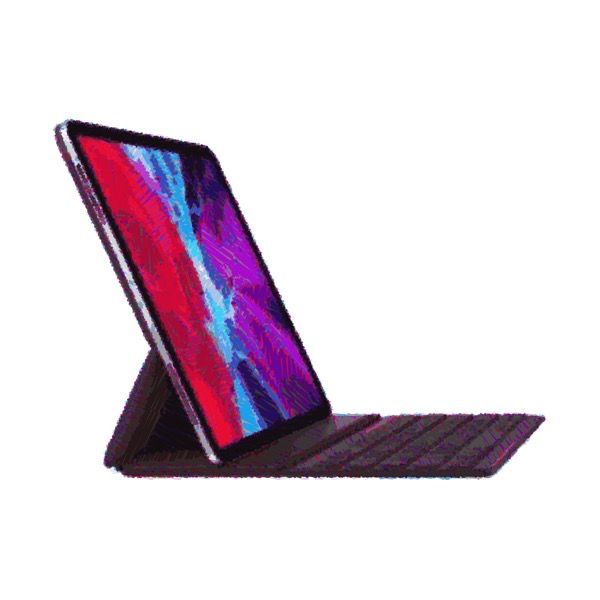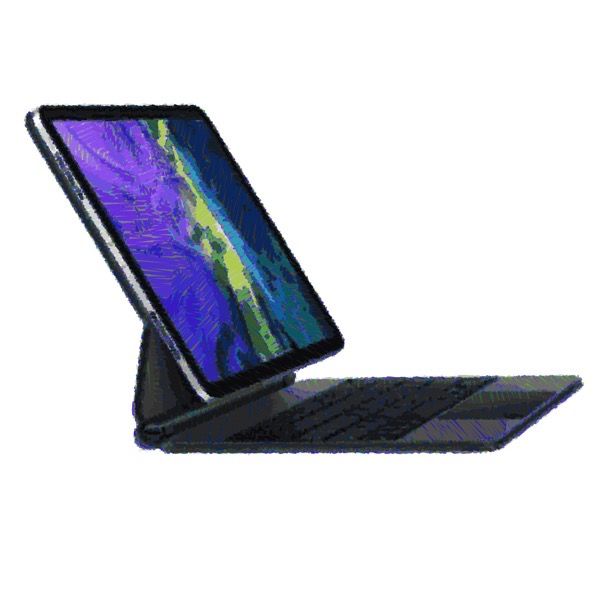iPad Pro Smart Keyboard or Magic Keyboard: Which is right for you?
Why two keyboard options for iPad Pro users? It comes down to how you use your iPad. Do you want an iPad that you can also type on or do you want an iPad that’s a laptop replacement? This article explores the positives and negatives of both keyboards to help you decide.

If you want your iPad to be an iPad, then the Smart Keyboard is best.
There have been complaints that the Smart Keyboard doesn’t have a trackpad. Yes it does: It’s called a screen. And it works just fine. The whole point of the iPad is that—with or without a physical keyboard—it doesn’t need a trackpad, so the Smart Keyboard is a perfectly viable option for those who type on an iPad.
Why it rocks.
- The keyboard flips 360º with no hinges. This makes it practical, not just for typing, but for those who draw or use the iPad vertically. It folds out of the way and gives some protection to the iPad.
- The keys are spillproof. They have no moving parts: they’re coated with a rigid, waterproof, nylon-mesh fabric that returns the keys as fast as any mechanical keyboard can. They’re cupped, a bit smaller than standard keyboard keys and easy to press.
- It’s very light and thin.
Why it knocks.
- It has two magnetic lock angles for positioning the iPad. Neither are right for typing. They both feel off. You want the tilt to be a little bit more or a little bit less, but can’t.
- It’s a pain to dislodge the iPad from the magnets to fold it closed. I regularly have the keyboard slip off since the magnets that hold the iPad to the back to the cover are weaker than the ones that hold the screen in place when typing.
- It can be awkward to pull up from the bottom of the screen without accidentally hitting a key. This is the equivalent to the Home button on the Pro, so it’s a necessity, unless you get used to hitting Command-H.
Who the Smart Keyboard is for.
If you draw on your iPad, use the pencil for input or read with your iPad in your lap, the Smart Keyboard will probably work best for you. It’s the most iPad-like of the two and works reasonably well in most situations. It’s a little strange that the keys are exposed when you flip the cover behind, but they’re designed to take the punishment.

If you want a laptop, then the Magic Keyboard is best.
As mentioned earlier, the iPad doesn’t need a trackpad at all. So why put one on the Magic Keyboard? As the iPad is quickly becoming an real-live laptop replacement, people want all the familiar laptopishness, including a trackpad.
The best feature of the Magic Keyboard isn’t the track pad, though. It’s that the iPad is now floating on a pedestal above the keyboard. It’s a superior experience to a laptop’s hinged lid. This trick is accomplished by using two hinges instead of one.
Why it rocks.
- The adjustable viewing angle and floating screen is great when using it like a laptop.
- The protruding iPad makes it easy to pull up on the bottom of the screen if that’s how you prefer to get to the Home screen.
- The lit keyboard makes it easier to type in any light.
- The caps lock is lit. Personally, this is a big plus.
- You now have a separate USB-C charging port on bottom hinge of the keyboard. I recently was moving a massive amount of video from my SD reader to my iPad and had to disrupt the process to charge. No need to do that anymore and there’s less need for a separate USB-C hub. It seems the port in the keyboard is only for charging.
- Feels more like a Mac keyboard.
Why it knocks.
- You have to get used to the hovering screen leaning out over the keyboard. With the iPad angled completely back (the best viewing angle) your knuckles bump the bottom lip of the iPad when using the top row of keys. I’m sure this gets better with use.
- Closing and opening requires you to maneuver two hinges. Not really an issue.
- The backlit keys drain the iPad battery.
- The left and right arrow keys are smaller than on the Smart Keyboard. And there doesn’t seem to be any reason why.
- The configuration is only useful for typing. You’ll need to remove the iPad from the protection of the keyboard case for drawing, penciling and vertical orienting.
Who the Magic Keyboard is for.
If you’ve given up your laptop for the iPad Pro, you’ll love the Magic Keyboard. It really does turn the iPad more into laptop than the MS Surface does. I figured someday Apple would make the MacBook Air touchscreen, but it hasn’t happened, so this now your Mac touch-screen laptop.
My take.
Neither keyboard is perfect for the iPad user, but they’re better than anything else out there. I’ve used the Smart Keyboard on an iPad Pro for four years and the Magic Keyboard for four days. Since I spend a majority of my 11-inch iPad time typing, the Magic Keyboard is a nice step up from the Smart Keyboard. I can now type in dim light, have a better viewing angle than most laptops and can use accessories while charging, without a hub.
But to be honest, I haven’t found the trackpad any more useful than navigating with the screen. That’s probably a testament how useful Apple made iPad gestures. But it’s also habit. I’ll likely find keyboard shortcuts will mean I’m touching the screen less in the future. You’ll now find some trackpad options in Settings when the Magic Keyboard is attached.
I still may use my Smart Keyboard, but only a flipped cover for a little protection for those times I’m drawing, reading or just want to use my iPad like an iPad.
